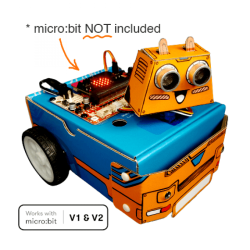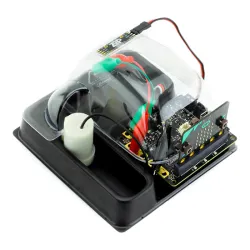micro:bit kits
micro:bit related kits and bundles
micro:bit GO Kit V2 (micro:bit V2 GO kit)
The BBC micro:bit is a pocket-sized codeable computer with motion detection, a built-in compass, LED display, and Bluetooth technology built in. V2 now with microphone and speaker
micro:bit V2 (20 units) classs bundle with Duracell batteries (mbit V2 classx20 bundle)
The BBC micro:bit is a pocket-sized codeable computer with motion detection, a built-in compass, LED display, and Bluetooth technology built in. V2 now with microphone and speaker
micro:bit V2 Essentials Kit with Jumpers and Duracell batteries (m:bit V2 Ess kit batt)
The BBC micro:bit is a pocket-sized codeable computer with motion detection, a built-in compass, LED display, and Bluetooth technology built in. V2 now with microphone and speaker
micro:bit V2 Essentials Kit with Jumpers (micro:bit V2 Ess kit)
The BBC micro:bit is a pocket-sized codeable computer with motion detection, a built-in compass, LED display, and Bluetooth technology built in. V2 now with microphone and speaker
micro:bit V2 Junior Kit (micro:bit V2 Junior)
The BBC micro:bit is a pocket-sized codeable computer with motion detection, a built-in compass, LED display, and Bluetooth technology built in. V2 now with microphone and speaker
BBC micro:bit V2.21 - Next Gen Classroom Pack(30pc) including watch straps (mbitV2.21 class30)
The micro:bit board is a product by the micro:bit Educational Foundation, the non-profit that aims to inspire every child to create their best digital future.
Kitronik Discovery Kit for the BBC micro:bit (micro:bit not included) (KT Discovery mbit)
The Kitronik Discovery Kit for BBC microbit is a great way to get started with both programming and electronics. The Kit contains five experiments that start very simply, building up to simulating real world systems as confidence grows.




















